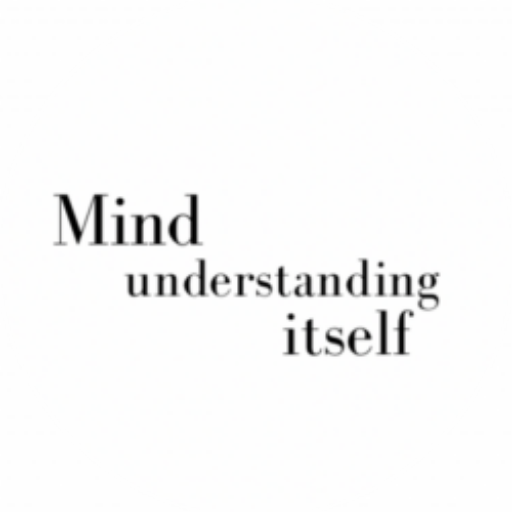A CBT Session: Compulsive Checking (Part 1)
Our session with Claire was supposed to start 15 mins ago. While wondering why she might have been late, I was sitting on my chair enjoying my cup of coffee as I heard a car engine stopped. She must have arrived. Less than a minute, she was there, standing at my office door.
C: Hello, Mrs.Smith, I’m late again, I know. I am so sorry.
T: Hello Claire, welcome. Tell me what happened?
C: Well…
T: Something came up?
C: I just couldn’t leave the house. I had things to do.
T: You had things to do. Alright.
C: Yes, but, in fact… (hesitating) I must have spent some extra time checking the stove, and the windows, and all the sockets around the house!
She burst into tears, and I hardly catched her words “What is wrong with me?!”
T: I see. In our previous sessions, you mentioned that you have some obsessions and compulsions and they cause problems in your life. Would you like to talk about this today? Maybe , we can start with talking about what happened this morning.
C: Well. OK. I think we can do that.
T: OK. Tell me what happened. You were ready to leave the house. (The therapist is trying to help the client go back to the moment. The aim is to identify the automatic thoughts related to the compulsive behavior. See: how to identify automatic thoughts )
C: I was ready to leave the house, but I was a little nervous. I always feel nervous when I am supposed to leave the house. It is probably because that I have to make sure that everything is switched off, or plugged out.
T: You were ready. Maybe you had your bag on your shoulder, your jacket in your hand. You were nervous. OK. What did you do? Did you start checking things?
C: Yes.
T: And do you check things in a fixed order? For example, checking the stove first, and then the coffee machine… ?
C: Yes. Yes, I certainly do.
T: Alright. Now, let’s try to imagine what happened this morning. You were ready, and nervous. What did you do? What did you check first?
C: First, starting with the bedroom, I closed all the windows upstairs. And, then I switch off the laptop in my study room, and checked the sockets to make sure nothing is plugged in. Since I used my curling iron this morning, I put it on the empty floor, making sure that its hot part doesn’t touch anything, especially its own cable, so I placed the cable carefully away from the iron.
T: And what might happen if you don’t place the cable away from the iron?
C: Hot iron might melt the cable and that might start a fire.
T: Oh, I see. And, then?
C: Then, I checked the sockets in the kids’ room, and then the ones in my husband’s study room, and then I went downstairs. I closed the windows first in the living room, and next in the dining room, and then, in the kitchen. Then, I went back to the living room and checked the sockets in the living room, and then I did the same in the dining room, and then, I went to the kitchen.
T: You’re in the kitchen. How are you feeling?
C: I am more nervous. and also I am not sure if I placed the curling iron right.
T: OK.
C: In the kitchen, I make sure that everything is plugged out. I check the blender, the coffee machine, and the kettle. and next, I check the stove. One, two, three, four. 1-off, 2-off, 3-off, 4-off. Off, off, off, off. OK. It is off. I made sure that all the four knobs are looking at the same direction. OK. I am doing it again just to make sure. OK. I can leave the kitchen now. I am leaving. I will go upstairs and check the iron again. But maybe I should check the stove for one more time. One more time before I go upstairs, I’ll go back to the stove.
T: So, you checked the stove, you were leaving, and then you decided to check again. What happened there?
C: Nothing. I just wanted to make sure…
T: Did you have a thought just before having turned back to the stove?
C: I don’t know. I just thought “what if?”, so I went back.
T: What I’d really like to know is that if there were any images on your mind just before you turned back to the kitchen.
C: Oh, yes. I think there was. I saw an image in my mind in which my empty hand turning on one of the burner knobs, and then I thought “what if I turned it on?”
T: So after you checked all the burners, and made sure that all were off, and you were leaving, you had an image on your mind in which you turned on one of the burners, and next, you thought: “what if I did that? what if I turned it on again?”, and you went back to the stove?
C: Exactly.
T: And then?
C: I checked the burner knobs again.
T: At the same order.
C: Yes. and then, I wanted to go back to upstairs, but then I had the same obsession again. I thought maybe I should check for one more time. Then, I said to myself “I’ve already checked it for one more time”. Then, I saw that image again in my mind.
T: In which you are turning the knob.
C: Yes, and not knowing what to do, feeling hopeless, I got more and more nervous, and then in my mind I saw myself in a story in which I don’t check the burner, and leave the house, and cause a fire. We lose everything we have just because I didn’t check it for one more time! so I thought “it is not worth it.” and I went to check it again. (crying)
T: You must have felt quite anxious there… So when you went back to the kitchen in order to check the stove for another time, you actually knew that you did not turn the knob on, so it must have been off, but you went back there anyway because you thought “what if”?
C: Yes, exactly. I think not checking it for one more time is not worth losing everything, so I just go check it for one more time everytime I have the obsession.
T: Well, from this point of view, checking things again and again sounds like a reasonable thing to do, doesn’t it?
C: Well, at that moment, checking it for one more time feels like the most logical thing to do, but when I do it 10 times, sometimes 20, even when I know that it is off…. It takes too much time… I bet I’ve spent half of my life checking things! (crying…)
T: I understand. So you said that you see the image in your mind in which you are turning the burner knob, and then you have this impulse to go check it again. Here, a part of you believes that the image in your mind you turning on the stove might be true. Am I right?
C: Yes, I guess…
T: What I wonder is that if you have any evidence to believe this thought. For example, have you ever done such a thing? Turning on the stove just before leaving the house? (Examining the accuracy of the thought-looking for evidence that supports the thought. See: how to challenge automatic thoughts-section1. )
C: No, I’ve never done such a thing.
T: You have never done that but you believe that you would. I wonder why? Why do you think you would do such a thing?
C: Actually I thought about this. I asked myself “Why would I do that?”. Then I thought what if subconsciously I hate my family, and my life and I subconsciously want to destroy everything? or… or what if I don’t deserve this beautiful house, and beautiful life? Or, I am just afraid that I might simply forget checking things (she laughs…) as if that’s possible!
T: So I understand that you have some reasons to believe the image in your mind. I understand that. I would definitely talk about these ideas but, first, I’d like to focus on your belief about the image in your mind. You said that you have never done such a thing, but a part of you still thinks that the image in your mind might be true that is If you have an image in your mind turning on the stove, it might be true that you actually did that. Would you like to do an experiment with me to test this belief?
C: Alright.
T: Come with me please. (taking her by the kettle where there is a socket). We don’t have a stove here, but I think we can use the socket. Do you see this cord out of the socket. Now, I would like you to close your eyes and imagine yourself plugging the cord into the socket. (The therapist is using the survey method. See: How to challenge automatic thoughts-end of section1 )
C: Are you serious? Of course, it won’t be plugged in!
T: Yes, I am. I understand that a part of you believe the image in your mind is true. I think this experiment might help us test it.
C: OK. This sounds really silly, but I am going to do it.
T: Are you imagining it?
C: Yes I am.
T: OK. Now, open your eyes please, and look at the socket. Is it plugged in?
C: No, of course it is not!
T: So how much do you believe now seeing an image in your mind plugging the cord into the socket means that you did it?
C: I don’t believe it right now, not at all really. I just wish that I can remember this next time I have that image in my mind. (surprised and somewhat relieved)
T: It is good that you don’t believe it much right now. When you get home, maybe you can do this little experiment with the stove too. I’d like you to go in front of the stove close your eyes and imagine yourself turning on a burner knob. and then open your eyes and look at it. Do you think you can do this?
C: Yes, I think I can.
(The purpose of this experiment is to help the client separate from her thought and see that it is a thought, not the reality.)
T: Now, if it is convenient for you, let’s work on your thoughts related to why you think you would turn on the stove, or plugged in the electric cord into the socket. You said that you believe you could do it because you might be subconsciously want to burn the house down. Can you tell me what you meant by this?
To be continued…
PS: Although the whole story was written by me, I used my professor Turkcapar’s book “Bilişsel Terapi” as a guidance. I added the book in the reference part.
References
Purdon, C., and Clark, D.A. (2005). Overcoming Obsessive Thoughts- How to Gain Control of Your OCD. New Harbinger Publications Inc.
Turkcapar, H. (2015). Bilişsel Terapi, Temel İlkeler ve Uygulama. HYB Basım Yayın, Ankara.







One Comment